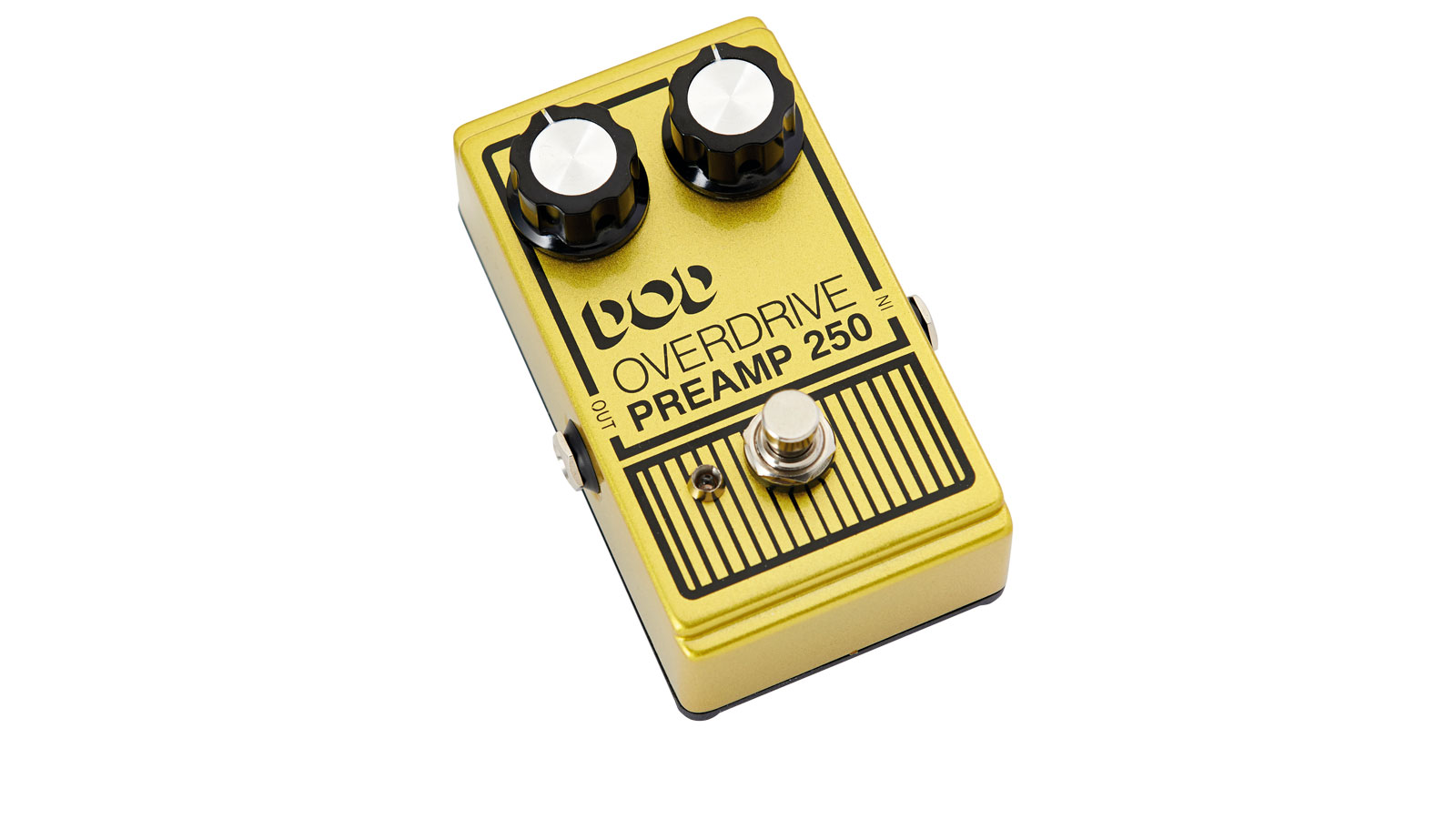MusicRadar Verdict
Provides boost and dirt for your amp, with a fuzzy edge as you turn up.
Pros
- +
Flexible overdrive for both clean and driven amp tones. Borderline fuzz sounds.
Cons
- -
Not a lot.
MusicRadar's got your back
The DOD Overdrive Preamp 250 is a 70s-designed overdrive pedal, with a gain knob turning up the dirt and a level knob setting the volume of the output signal.
"Grit turns into more amp-like overdrive, with not much in the way of tonal shift as you turn up the gain"
With the level set high and gain at minimum, you can use the pedal as a clean-ish booster with a semblance of grit to the sound.
That grit turns into more amp-like overdrive, with not much in the way of tonal shift as you turn up the gain, delivering a wide range of possibilities depending on how you combine the two controls. Basically, it adds crunch to a clean amp or drives a driven amp further - which it does very well.
There's more, though: turning the gain knob past vertical and on to its final reaches sees the distortion get brighter and more aggressive as the nature of the diode- clipping circuit starts to offer some of the character you'd get from a fuzz pedal.
There's a schizophrenic feel to this pedal, but that's not a bad thing: just set the gain for the sound you want.
Want all the hottest music and gear news, reviews, deals, features and more, direct to your inbox? Sign up here.
Trevor Curwen has played guitar for several decades – he's also mimed it on the UK's Top of the Pops. Much of his working life, though, has been spent behind the mixing desk, during which time he has built up a solid collection of the guitars, amps and pedals needed to cover just about any studio session. He writes pedal reviews for Guitarist and has contributed to Total Guitar, MusicRadar and Future Music among others.

